As the world becomes more aware of climate change, pollution, and the rapid growth of electronic waste, consumers and companies alike are shifting toward sustainability. In 2025, technology is evolving not just to be faster and smarter – but also greener. Many new gadgets are now being designed with eco-friendly materials, energy-efficient systems, and longer lifespans to help reduce their impact on the environment. This shift is also encouraging responsible consumption, where people are more mindful about the products they buy and how they use them.
In this detailed guide, we’ll explore the most practical and innovative sustainable tech gadgets you can buy right now. Each one plays a part in creating a cleaner, greener future.
1. Solar-Powered Chargers: Harnessing Natural Energy
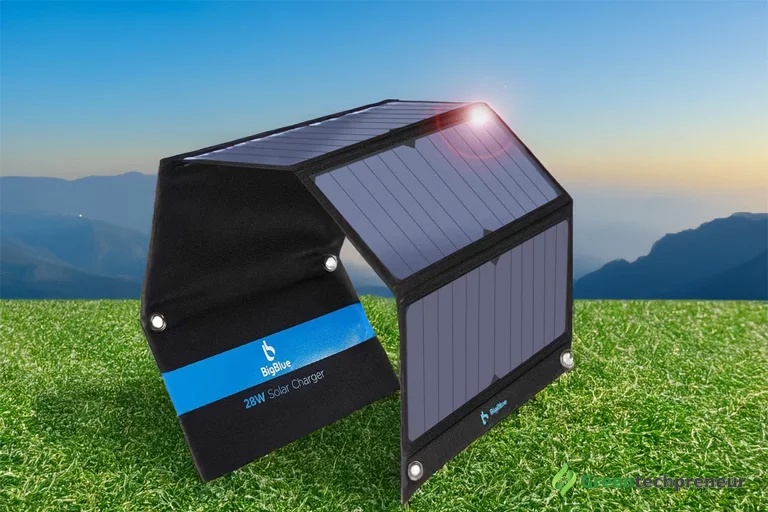
Solar-powered chargers are a simple but powerful step toward sustainability. These chargers use solar panels to convert sunlight into electricity, which can then charge phones, tablets, power banks, and other devices. They’re ideal for outdoor use, camping, or emergencies, but also useful for everyday charging near a sunny window. They reduce dependence on electricity from non-renewable sources and help cut down your electric bill.
Why it matters: Reduces fossil fuel use and electricity demand.
Top Picks: Anker PowerPort Solar, BigBlue Solar Charger 28W, BioLite SolarPanel 10+
2. Eco-Friendly Smartphones: Built to Last, Designed to Be Recycled
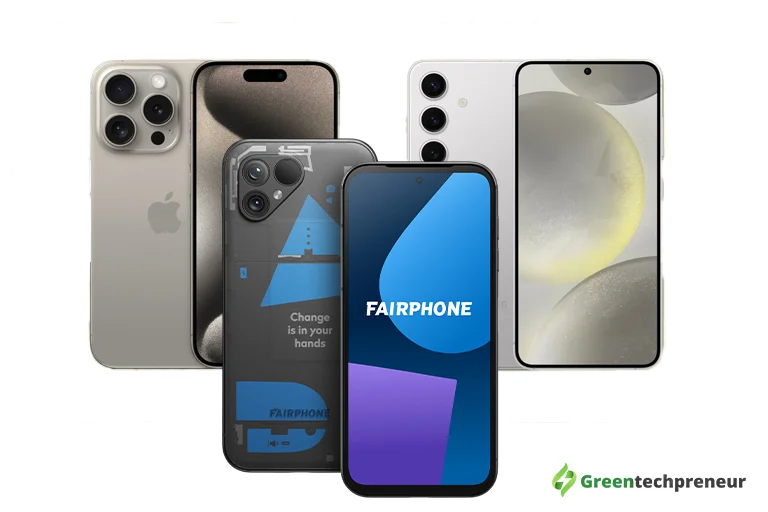
Smartphones are essential to modern life, but they also contribute heavily to e-waste due to frequent upgrades and non-repairable designs. Thankfully, companies like Fairphone, Apple, and Samsung are now creating phones with recycled materials, energy-efficient components, and modular parts. Fairphone, in particular, is a leader in sustainable phone design, allowing users to easily replace batteries, screens, and cameras instead of buying a new phone when one part breaks.
Why it matters: Lowers electronic waste and supports ethical production.
Top Picks: Fairphone 5 (modular and repairable), iPhone 15 (made with 100% recycled aluminum and rare earths), Samsung Galaxy S24 (increased use of recycled materials)
3. Energy-Efficient Smart Home Devices: Smarter Use of Power
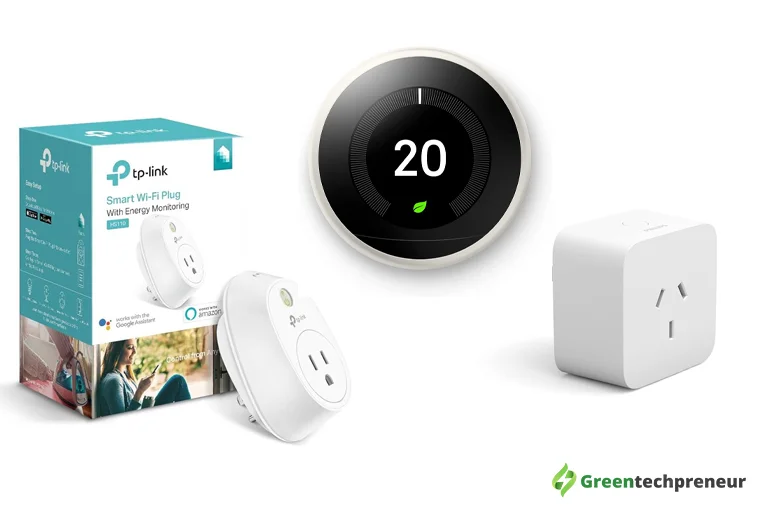
Smart home technology is not only about convenience – it can also promote energy efficiency. Devices like smart thermostats learn your schedule and adjust heating or cooling automatically, saving energy when you’re not home. Smart plugs can cut off power to idle devices, and LED lighting systems use much less power than traditional bulbs while lasting years longer.
Why it matters: Saves energy, reduces utility bills, and cuts down CO2 emissions.
Top Picks: Google Nest Thermostat, Amazon Smart Plug, Philips Hue Smart LED Bulbs, TP-Link Kasa Energy Monitoring Plugs
4. Sustainable Laptops: Recycled Materials and Longer Life
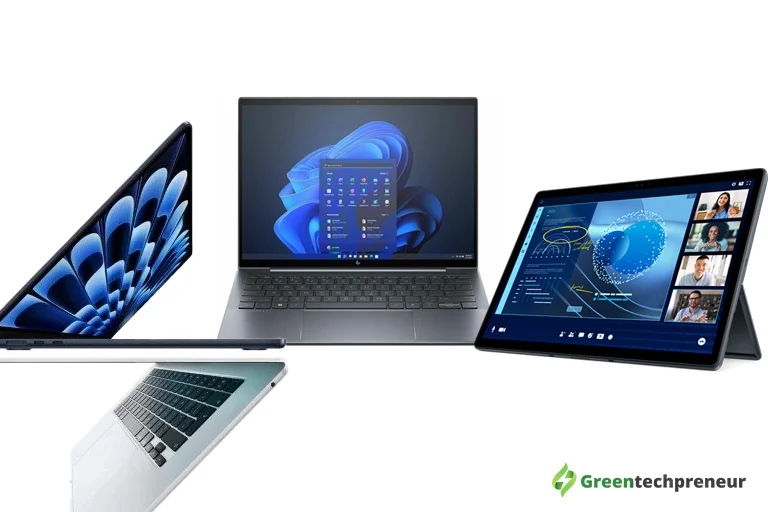
Laptop manufacturers are now using recycled aluminum, ocean plastics, and bio-based materials to make their devices more sustainable. Some companies are also designing for easy repair and upgrade so users can keep their laptops longer without needing to replace the entire device. Many newer laptops are also more energy efficient, using low-power displays and processors.
Why it matters: Reduces environmental impact from materials and extends device life.
Top Picks: Dell Latitude 7350 Detachable (recycled materials and repairable design), HP Elite Dragonfly G4 (made with ocean-bound plastics), MacBook Air M3 (high efficiency with recycled materials)
5. Eco-Conscious Smart Wearables: Fitness Meets Sustainability
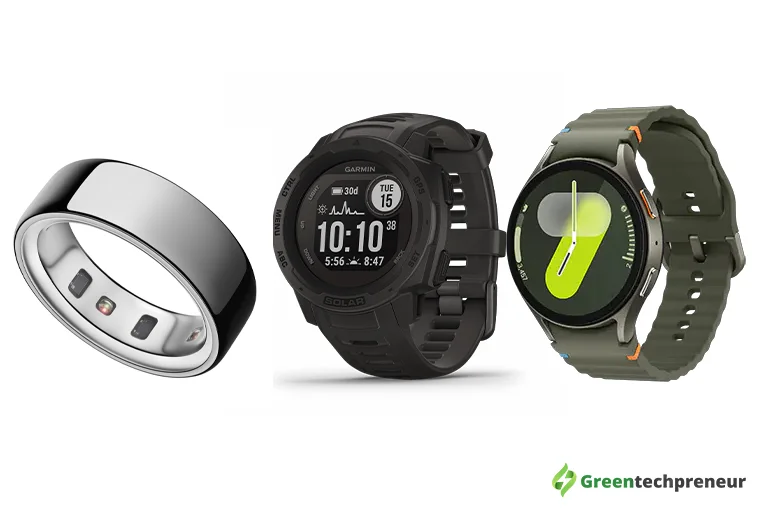
Fitness trackers and smartwatches are now being made with sustainable design in mind. This includes the use of recycled silicone, ocean plastics, and environmentally certified metals. These devices help users track their health while minimizing their impact on the planet. Some new models also feature solar charging to further enhance their eco-credentials.
Why it matters: Promotes personal health while reducing environmental harm.
Top Picks: Samsung Galaxy Watch 7 (uses recycled aluminum), Garmin Instinct Solar (solar charging + rugged design), Oura Ring 4 (energy-efficient sleep and health tracker)
6. Biodegradable Accessories: Designed to Return to Nature
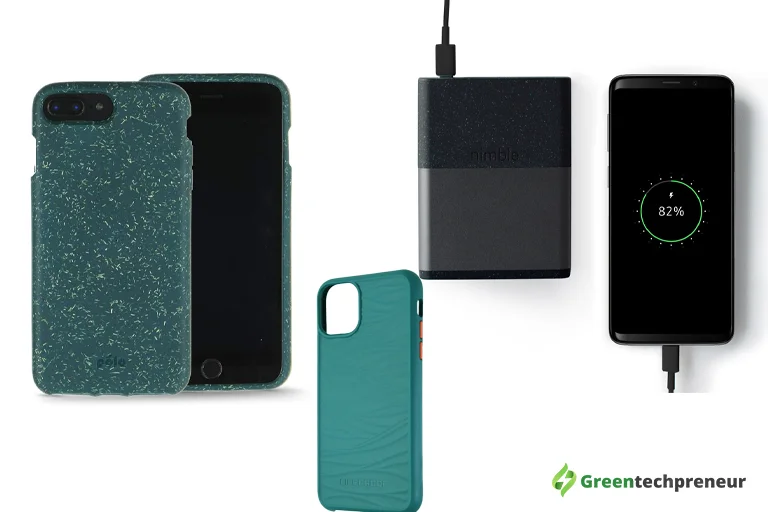
Tech accessories like phone cases, charging cables, and laptop bags are often overlooked but can add significantly to plastic waste. In 2025, more brands are producing accessories made from plant-based bioplastics, recycled fabrics, and other biodegradable materials. These products perform well and return to the earth safely after disposal.
Why it matters: Minimizes plastic waste and promotes responsible consumerism.
Top Picks: Pela Case (made from compostable bioplastic), Nimble Eco Accessories (uses recycled materials and sustainable packaging), LifeProof Eco-Series Cases
7. Reusable Notebooks and E-Writing Tablets: Save Paper, Go Digital
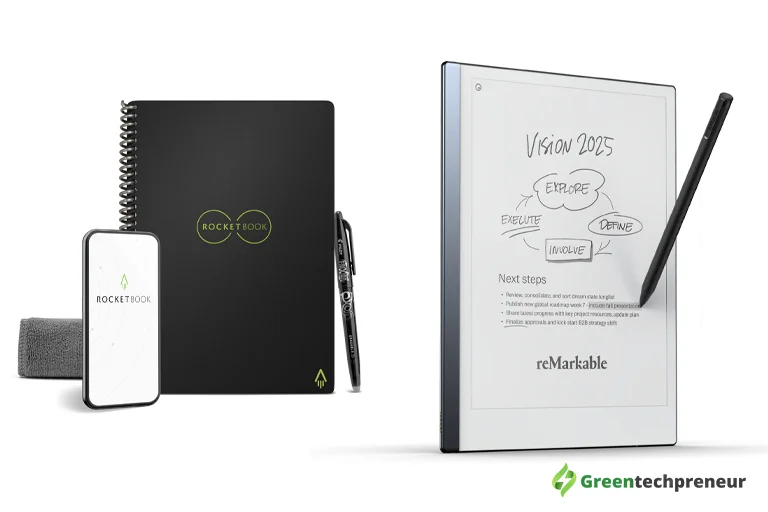
Instead of buying notebook after notebook, users are switching to reusable smart notebooks and e-writing tablets. These gadgets allow users to write, erase, and reuse the same pages or send handwritten notes directly to cloud storage. They are ideal for students, professionals, and note-takers who want to reduce their paper usage.
Why it matters: Reduces paper waste and supports digital productivity.
Top Picks: Rocketbook Core (erasable and cloud-connected), reMarkable 2 (paper-like writing with digital backup), Boogie Board (simple reusable writing pad)
8. Low-Power E-Readers: Read More, Waste Less
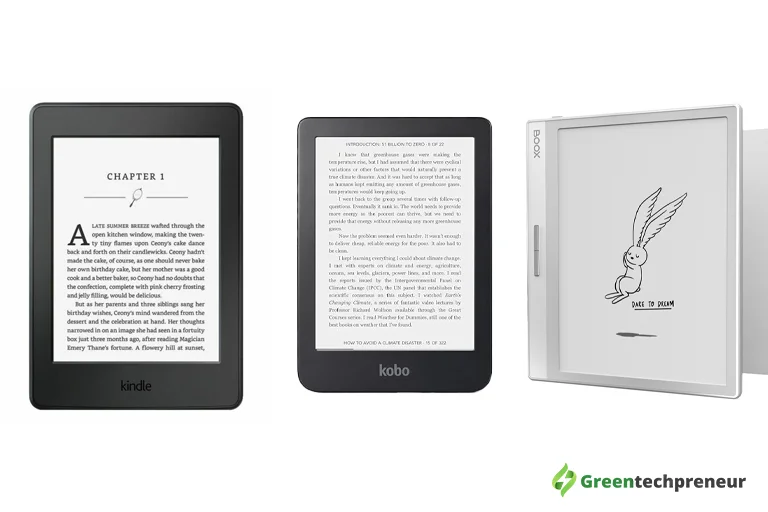
E-readers like Kindle and Kobo use e-ink screens that consume very little energy and are easy on the eyes. They can hold thousands of books in one lightweight device, eliminating the need for paper books and saving space. Some newer models are made with recycled plastics and offer weeks-long battery life.
Why it matters: Cuts down paper production and uses less power.
Top Picks: Kindle Paperwhite (now made with 60% recycled plastic), Kobo Clara 2E (recycled and waterproof), Boox Leaf (compact and versatile)
Why These Gadgets Matter in 2025
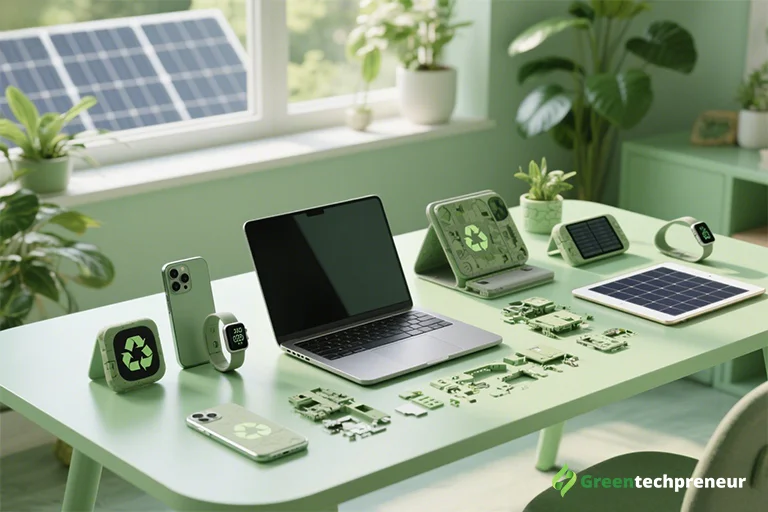
- E-waste is one of the fastest-growing types of waste in the world. These gadgets are helping to reduce that by being repairable, recyclable, and longer-lasting.
- Energy consumption is a major cause of carbon emissions. Energy-efficient devices help cut down on daily electricity use.
- Consumers are demanding more accountability from tech brands. By supporting sustainable products, you’re encouraging ethical practices and innovation.
Final Thoughts: A Greener Future Is in Your Hands
Sustainable technology isn’t just for environmentalists – it’s for everyone who wants to make smarter, more responsible choices. In 2025, it’s easier than ever to buy gadgets that support both your lifestyle and the planet. By investing in eco-friendly products – whether it’s a solar charger, a biodegradable phone case, or a laptop made from recycled aluminum – you’re contributing to a cleaner environment.
Next time you shop for a new gadget, consider asking these questions:
- Was this product made with recycled or biodegradable materials?
- Is it energy-efficient or solar-powered?
- Can I repair or upgrade it instead of replacing it?
These small decisions add up to a big difference. Sustainable tech is not just the future—it’s available now.
FAQs
Q. What motivates you to choose eco-friendly products?
A. Choosing eco-friendly products helps reduce pollution, protect natural resources, and support a healthier planet for future generations.
Q. What are some questions to ask about sustainable development?
- Is it reducing harm to the environment?
- Does it use renewable resources?
- Is it socially and economically fair?
- Can it be maintained long-term?
Q. How are sustainable products better for the environment?
A. They use fewer resources, produce less waste, and often last longer. This helps reduce pollution, save energy, and cut down carbon emissions.
Q. What are some eco-friendly, sustainable products?
A. Reusable water bottles, bamboo toothbrushes, solar-powered chargers, LED lights, recycled paper, eco-friendly cleaning supplies, and energy-saving appliances.

